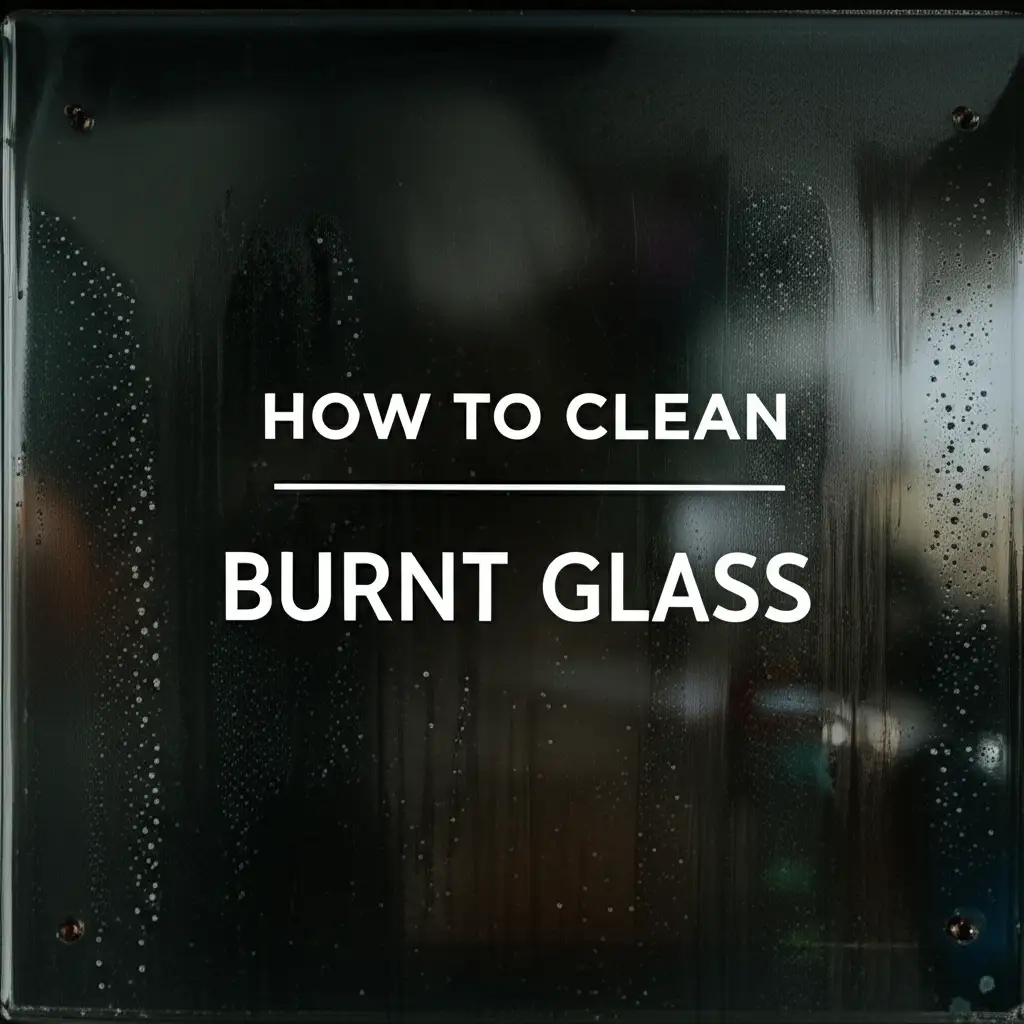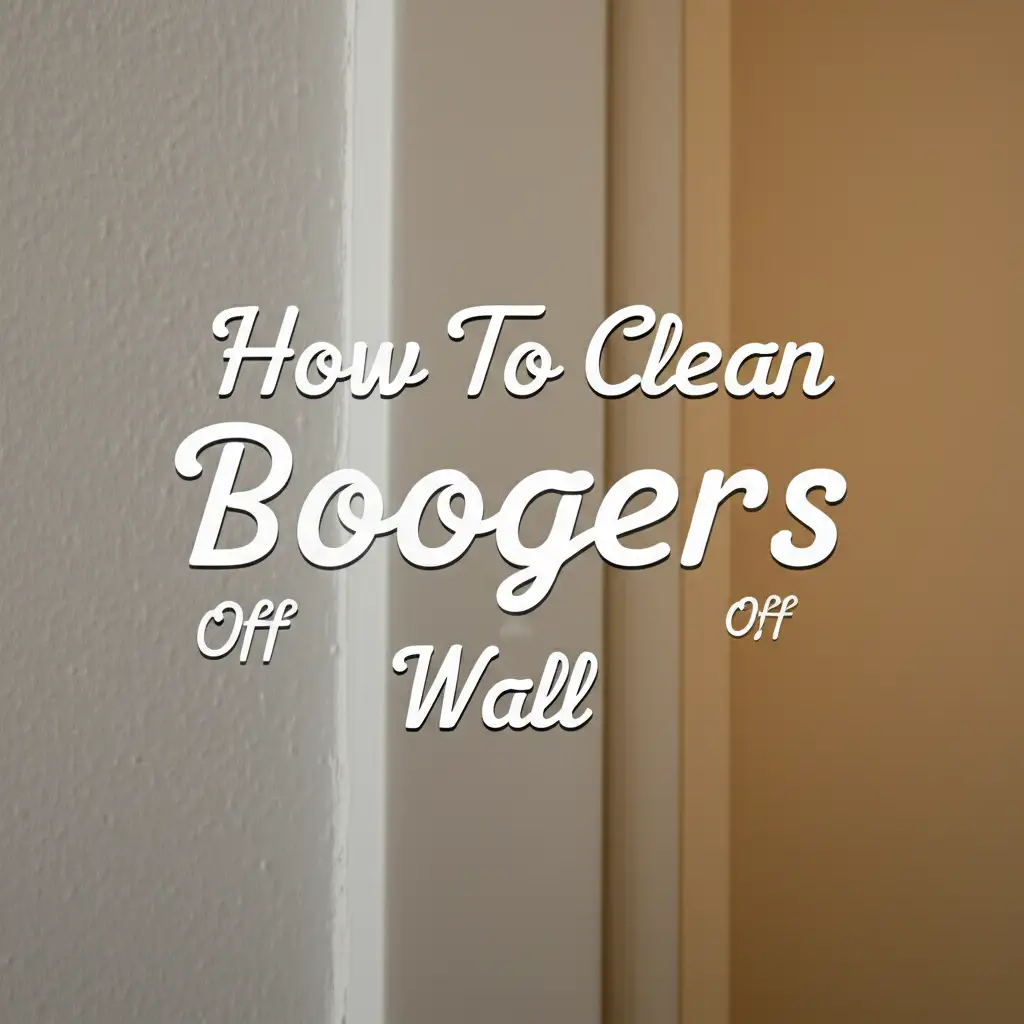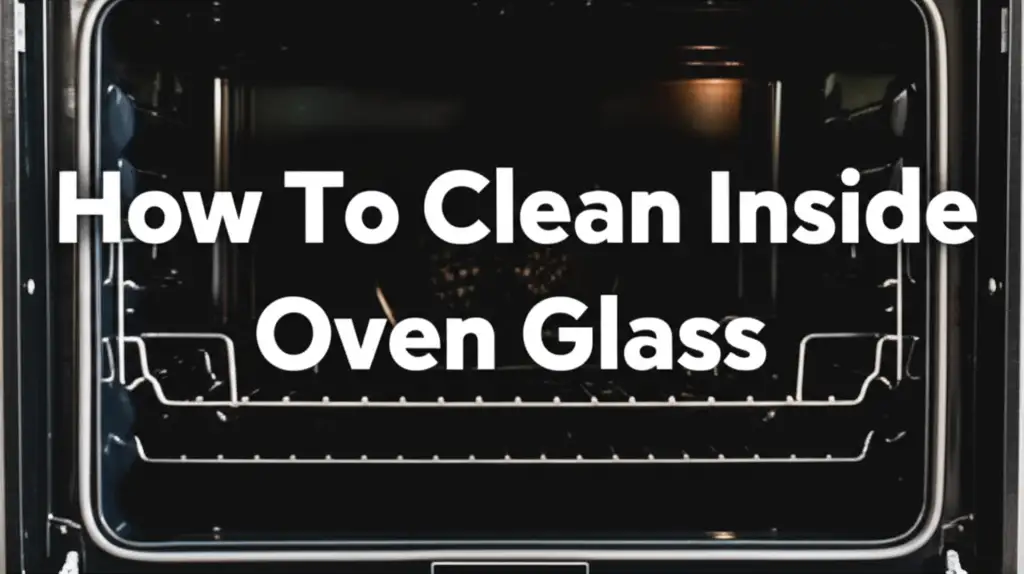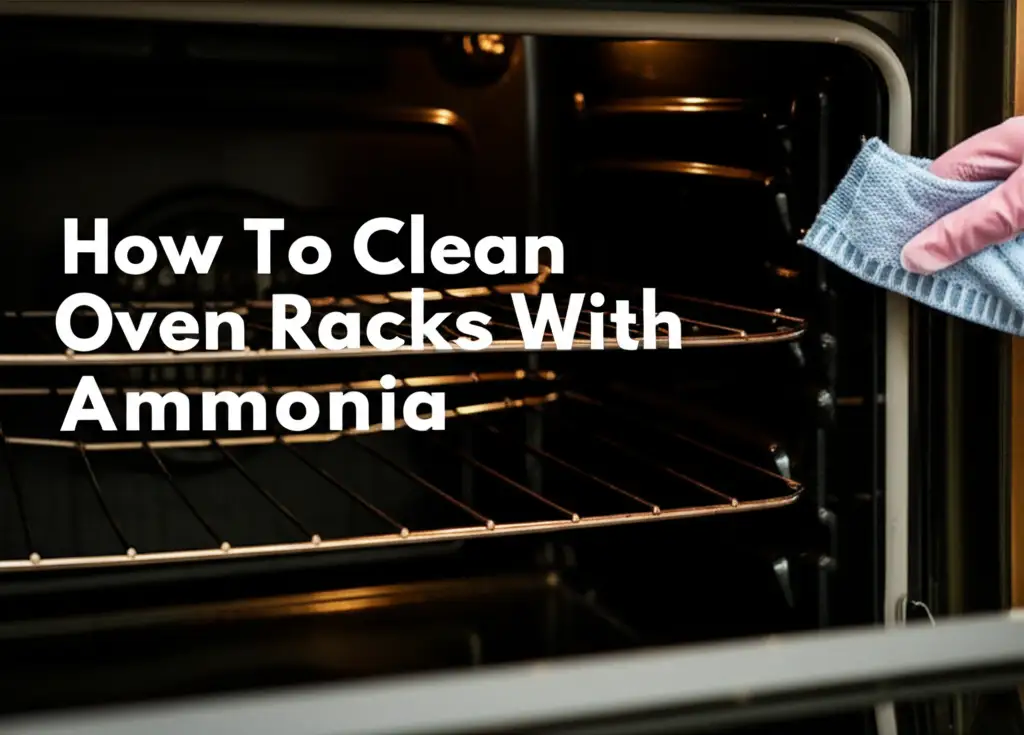· Home Cleaning Guides · 18 min read
How To Clean Burnt Glass

How To Clean Burnt Glass Effectively
Burnt residue on glass surfaces can feel impossible to remove. Whether it is a messy spill on your stove top, baked-on grease inside your oven door, or stubborn soot on your fireplace glass, the sight is discouraging. I understand the frustration of seeing a once-clear surface marred by unsightly black marks. Cleaning burnt glass requires patience and the right approach. This guide provides clear, simple steps to help you restore the shine to your glass. You will learn about different cleaning methods, from gentle solutions to more powerful techniques.
Takeaway
- Identify the type of burnt residue to choose the best cleaning method.
- Always cool the glass completely before you begin cleaning.
- Use non-abrasive tools to avoid scratching glass surfaces.
- Baking soda paste and vinegar are effective, natural cleaning agents for burnt glass.
- Specialized glass cleaners offer a stronger solution for tough stains.
Clear Answer to the Main Query
You can clean burnt glass by allowing it to cool, then gently scraping loose residue with a razor blade. Apply a paste of baking soda and water or a specialized glass cleaner. Let it sit, then scrub with a non-abrasive sponge. Finish by wiping clean with a damp cloth and drying for a streak-free shine.
Understanding Burnt Glass Residue
Burnt glass residue appears in many forms. It often comes from cooking spills, smoke, or accidental contact with heat. Knowing the type of residue helps you choose the correct cleaning method. Different materials burn differently, leaving unique marks on glass surfaces.
Common Types of Burnt Residue
- Carbonized Food: This is typical from oven spills or stove top boil-overs. It appears as hard, black, crusty bits. Sugars and starches burn easily, creating tough carbon deposits. You will see this often in kitchen settings.
- Burnt Grease/Oil: Cooking fats can splatter and bake onto glass, especially oven doors. They leave behind a sticky, dark film that hardens over time. This type of residue often smells unpleasant when heated.
- Soot and Creosote: Found mostly on fireplace or wood stove glass. Soot is fine black powder. Creosote is a tar-like substance that forms from incomplete combustion. It is very sticky and challenging to remove. You can read more about how to clean soot off glass.
- Melted Plastic: An accidental melt can create a solid, often discolored patch on glass. This is one of the trickiest residues to handle. It cools quickly and fuses to the glass surface. For more details on this, explore how to clean burnt plastic from oven.
Understanding these differences matters. A light carbon stain might yield to a simple baking soda paste. A heavy creosote buildup needs stronger action. You will save time and effort by starting with the right approach. Always ensure the glass is completely cool before you touch it. Heat can make chemicals react differently and cause injury. I always let my oven glass cool overnight after a heavy baking session before cleaning it.
Essential Tools for Cleaning Burnt Glass
Cleaning burnt glass effectively requires the right tools. Using improper tools can scratch the glass or make the job harder. I learned this the hard way many times. Having everything ready before you start cleaning makes the process smoother.
Tools for a Successful Clean
- Safety Gloves: Protect your hands from cleaning solutions and sharp edges. Chemical burns or cuts are easy to get without them. I always wear sturdy rubber gloves for any cleaning job involving chemicals.
- Microfiber Cloths: These are soft, absorbent, and lint-free. They are perfect for wiping down glass without leaving streaks. You will need several for rinsing and drying.
- Non-Abrasive Sponges or Scrubbers: Look for sponges made for glass or non-stick surfaces. Steel wool or abrasive scrubbers will scratch your glass. This type of damage is permanent.
- Plastic Scraper or Razor Blade: A dedicated glass scraper with a single-edge razor blade is very effective for burnt-on deposits. Hold it at a low angle to lift residue without gouging the glass. Always be careful when using a razor blade. It is sharp.
- Spray Bottle: Handy for applying cleaning solutions evenly. You can mix your own solutions, like vinegar and water, in it.
- Bucket: Useful for mixing cleaning solutions or holding dirty cloths. A small bucket works well for these tasks.
Using these tools properly ensures safety and efficiency. Always read the instructions on any cleaning product. Some tools are very specific for certain types of glass or stains. For instance, a ceramic stove top scraper is ideal for burnt food on a glass-ceramic surface. I often keep a separate set of tools just for glass cleaning to prevent cross-contamination or accidental damage from other cleaning tasks. This simple organization saves me a lot of hassle.
Gentle Approaches to Clean Burnt Glass
Sometimes, burnt glass does not need harsh chemicals. Many common household items work wonders on lighter stains. These methods are safer for you and for the environment. They also often cost less than specialized cleaners. I prefer to start with the gentlest method first.
Vinegar and Dish Soap Method
This combination is a powerful degreaser and mild acid. It can loosen many types of burnt residue.
- Prepare the Surface: Ensure the glass is cool. Remove any loose debris with a dry cloth.
- Mix the Solution: In a spray bottle, combine equal parts white vinegar and warm water. Add a few drops of dish soap. Shake gently to mix. You can also learn more about how to clean glass with vinegar.
- Apply and Soak: Spray the solution generously onto the burnt areas. Let it sit for 15-30 minutes. For tougher spots, you can cover the sprayed area with a damp cloth to keep it moist.
- Scrub Gently: Use a non-abrasive sponge or cloth to scrub the burnt residue. Circular motions work best. The residue should start to lift.
- Rinse and Dry: Wipe the glass clean with a damp microfiber cloth. Then, dry it with a separate, clean, dry microfiber cloth to prevent streaks. I always do a final buffing to ensure no water spots remain. This method is surprisingly effective for light grease and carbon stains.
Baking Soda Paste for Light Stains
Baking soda is a mild abrasive and odor absorber. It works well for light to medium burnt stains.
- Create the Paste: Mix baking soda with a small amount of water until it forms a thick paste. The consistency should be like toothpaste.
- Apply to Stains: Spread the paste over the burnt areas on the glass. Ensure the entire stain is covered.
- Let it Sit: Allow the paste to sit for at least 30 minutes, or even a few hours for stubborn stains. The baking soda works to lift the burnt particles.
- Scrub and Wipe: Use a damp, non-abrasive sponge to gently scrub the paste and the loosened residue.
- Clean Off: Wipe away the paste and grime with a clean, damp cloth. Rinse the cloth often. Finish by drying the glass with a clean microfiber cloth. This method is especially good for burnt food on a glass stove top. I’ve used it many times to tackle those tricky spots after a messy meal. Sometimes, a combination of these gentle methods works even better.
Tackling Stubborn Burnt Glass Stains
When gentle methods fall short, it is time for a more direct approach. Stubborn burnt glass stains, like heavily carbonized food or thick creosote, require stronger action. These methods use specialized tools and cleaners designed for tough residue. Always ensure proper ventilation when using stronger chemicals.
Using a Razor Blade Scraper
A razor blade scraper is a powerful tool for removing hard, baked-on residue. It can quickly lift what scrubbing cannot.
- Prepare the Surface: Make sure the glass is completely cool. Apply a thin layer of soapy water or a glass cleaning solution to the burnt area. This lubricates the surface.
- Angle the Blade: Hold the razor blade scraper at a very shallow angle, almost flat against the glass (about 10-20 degrees).
- Scrape Gently: Apply gentle, even pressure. Push the scraper away from you in short, controlled strokes. The burnt material should lift off in flakes or ribbons. Do not push too hard, and never use the corner of the blade, as this can scratch the glass.
- Wipe and Repeat: Wipe away the lifted residue with a damp cloth. Reapply the solution and repeat scraping until the glass is clean.
- Final Clean: After scraping, clean the area with a general glass cleaner or a vinegar solution to remove any remaining film. This tool is a game-changer for many burnt glass problems. I rely on it for my oven door glass.
Specialized Glass Cleaners
Many products exist specifically for burnt glass. These often contain mild abrasives or chemical agents.
- Ceramic Stove Top Cleaners: These creams are designed for glass-ceramic surfaces. They contain fine abrasives that polish and clean without scratching. Apply a small amount, rub with a soft cloth, and buff clean. Many effectively clean how to clean burnt water off glass stove top.
- Oven Glass Cleaners: Some oven cleaners are safe for glass. Always check the label to ensure it is suitable for your oven glass type. Follow the product instructions carefully. They often require a waiting period for the chemicals to work.
- Fireplace Glass Cleaners: These are specifically formulated to break down soot and creosote. They often come as sprays or creams. Apply, let sit, then wipe clean. These are usually much stronger than general glass cleaners.
When using any specialized cleaner, always test a small, inconspicuous area first. This checks for discoloration or damage. I follow product directions precisely. These cleaners can be potent, so ventilation is key. Always rinse the glass thoroughly after using any chemical cleaner.
Specific Burnt Glass Cleaning Scenarios
Different glass surfaces experience different types of burn marks. Your approach should change based on the specific item. Understanding the context helps you apply the right cleaning strategy. I always consider where the burnt glass is located before starting.
Oven Door Glass
Oven door glass often accumulates baked-on grease and food spills. These can be very stubborn due to repeated high heat.
- Cool Down: Ensure the oven is completely cool. This step is critical for safety.
- Remove Racks: Pull out oven racks to give yourself full access to the glass.
- Scrape Loose Debris: Use a plastic scraper or a razor blade (at a shallow angle) to carefully lift off any large, crusty bits.
- Apply Paste: Make a thick paste with baking soda and a small amount of water. Spread it generously over the entire burnt area on the inside of the oven door glass. For severe buildup, you might try a specialized oven cleaner.
- Let it Sit: Allow the paste to sit for several hours, or even overnight. This gives the baking soda time to break down the grime. You might cover it with plastic wrap to keep it moist.
- Scrub and Wipe: Use a damp, non-abrasive sponge or scrubber to scrub the paste. The burnt residue should lift away. Wipe clean with a damp microfiber cloth, rinsing the cloth frequently.
- Final Polish: Finish with a clean, dry microfiber cloth for a sparkling finish. For external glass, use a standard glass cleaner to ensure no streaks remain.
Glass Stove Top
Glass stove tops often get burnt-on sugar or food spills. These can be particularly tricky as they harden like cement.
- Cool Completely: Always let the stove top cool down before cleaning. Hot glass is dangerous and can break.
- Wet the Area: Spray the burnt area with warm water or a mixture of dish soap and water. Let it soak for a few minutes.
- Scrape Gently: Use a flat-edge razor blade scraper designed for glass stove tops. Hold it at a very low angle and gently push under the burnt material. The material should lift cleanly.
- Baking Soda Paste: For remaining residue, apply a baking soda paste. Let it sit for 15-30 minutes.
- Scrub and Wipe: Use a non-abrasive scrubber to work the paste over the stain. Wipe clean with a damp cloth.
- Streak-Free Finish: Buff the entire stove top with a clean microfiber cloth or use a specialized ceramic stove top cleaner for a glossy finish. For tips on avoiding streaks, see how to clean glass without streaks.
Fireplace Glass
Fireplace glass often accumulates stubborn soot and creosote. These substances are oily and acidic.
- Ensure Cold Glass: Wait until the fireplace glass is completely cool. This prevents chemical reactions and burns.
- Protect Surroundings: Lay down old newspapers or a tarp below the fireplace opening. Soot can be messy.
- Damp Ash Method (for light soot): Dip a damp paper towel into some fine wood ash from the fireplace. Gently rub the ash-covered paper towel onto the soot-stained glass. The ash acts as a mild abrasive. Wipe clean with a fresh damp cloth.
- Specialized Fireplace Cleaner: For heavier creosote, use a commercial fireplace glass cleaner. Spray it directly onto the cool glass.
- Let it Work: Follow the product instructions for dwell time, usually 5-15 minutes. The cleaner breaks down the tar-like creosote.
- Wipe and Buff: Use a clean, non-abrasive cloth or paper towel to wipe away the cleaner and dissolved soot. Rinse with a damp cloth and then buff dry with a clean, dry cloth. This process transforms murky fireplace glass into a clear view of the flames.
Safety First When Cleaning Burnt Glass
Safety is paramount when cleaning burnt glass. You are dealing with sharp tools, potentially harsh chemicals, and sometimes delicate surfaces. Neglecting safety can lead to injuries or damage. I prioritize safety every time I clean burnt glass.
Key Safety Practices
- Cool Down: Always, always ensure the glass is completely cool before you touch it. Hot glass can cause severe burns. It can also crack or shatter if exposed to cold water or cleaning solutions while still hot. Patience is a virtue here.
- Ventilation: If you use chemical cleaners, work in a well-ventilated area. Open windows and doors. Turn on exhaust fans. Fumes from cleaners can cause respiratory irritation or other health issues. I never use strong cleaners in a closed room.
- Protective Gear: Wear appropriate protective gear.
- Gloves: Rubber or chemical-resistant gloves protect your hands from harsh chemicals and sharp edges.
- Eye Protection: Safety goggles protect your eyes from splashes of cleaning solution or flying debris, especially when scraping.
- Old Clothes: Wear old clothes that you do not mind getting dirty or stained.
- Test in an Inconspicuous Area: Before applying any new cleaning solution or method to a large area, test it on a small, hidden spot. This helps ensure it does not damage or discolor the glass or surrounding materials. This step is crucial for specialized cleaners.
- Proper Tool Handling: Handle razor blades and scrapers with extreme care. Keep fingers away from the blade edge. Always scrape at a shallow angle. Store blades safely when not in use, preferably in a holder.
- Read Labels: Always read and follow the instructions and safety warnings on cleaning product labels. Different products have different active ingredients and require specific handling. Pay attention to disposal instructions too.
By following these safety guidelines, you can clean burnt glass effectively without putting yourself at risk. My personal rule is “if it feels unsafe, stop and reassess.” It is better to take a little more time than to risk injury.
Preventing Future Burnt Glass Buildup
Cleaning burnt glass can be a chore. Preventing buildup is always easier than removing it. Regular maintenance and quick actions can keep your glass surfaces clear. I have found that a little effort often saves a lot of work later.
Simple Habits for Clean Glass
- Wipe Spills Immediately: If food or liquid spills onto your glass stove top or oven door while it is still warm (but not hot), wipe it up right away. Fresh spills are much easier to clean. Use a damp cloth. This prevents them from baking on.
- Regular Light Cleaning: Do not wait for heavy buildup.
- Stove Tops: After each cooking session, once the stove top cools, wipe it down with a damp cloth and a drop of dish soap. This removes minor splatters before they turn into burnt spots.
- Oven Doors: Give the inside of your oven door a quick wipe down after heavy cooking or baking. Even a damp cloth can remove fresh grease.
- Fireplace Glass: Wipe fireplace glass with a damp cloth after each use, once it is completely cool. This helps control soot accumulation.
- Use Cooking Protection:
- Oven Liners: Place a silicone oven liner or aluminum foil on the bottom rack of your oven (not directly on the bottom) to catch spills. This protects the oven floor and sometimes the door.
- Lids on Pots: Use lids on pots and pans while cooking. This helps contain splatters and prevents them from landing on your stove top.
- Splash Guards: Consider using a splash guard for frying or saucy dishes.
- Proper Fireplace Habits:
- Dry Wood: Burn only dry, seasoned wood in your fireplace. Wet or unseasoned wood creates more smoke and creosote buildup.
- Good Airflow: Ensure your fireplace has good airflow. Proper combustion reduces soot and creosote formation. Keep the damper open sufficiently.
- Avoid Overfills: Do not overfill pots and pans. This minimizes the chance of boil-overs and spills onto your stove top.
These preventive measures are small efforts that yield big results. They keep your glass surfaces looking cleaner for longer. I find that building these habits into my routine makes a significant difference. You spend less time scrubbing stubborn burnt messes.
Restoring Clarity and Shine to Glass
Once the burnt residue is gone, the glass may still look dull or have faint streaks. Restoring its original clarity and shine is the final step. This process helps your hard work truly show. I enjoy seeing glass sparkle after a thorough cleaning.
Polishing for a Perfect Finish
- Final Rinse: After removing all burnt material and cleaning agents, give the glass a thorough final rinse. Use a clean, damp microfiber cloth. Make sure no soapy or chemical residue remains. Residue will leave streaks.
- Dry Thoroughly: Immediately dry the glass with a clean, dry microfiber cloth. Work in one direction, or use a buffing motion. Lint-free cloths are essential for a streak-free finish.
- Glass Cleaner (Optional): For an extra shine, or to address any lingering streaks, spray a small amount of a streak-free glass cleaner onto a clean microfiber cloth (not directly onto the glass, as it can cause drips and streaks). Wipe the glass in even strokes. You can also explore options for how to clean glass without glass cleaner using natural methods.
- Newspaper Trick: For stubborn streaks, old newspaper (black and white, not colored) works wonders. Crumple a sheet and rub it over the glass. The ink acts as a mild abrasive, and the paper is lint-free. This trick makes glass incredibly shiny.
- Buffing: Using a clean, dry microfiber cloth, buff the glass until it gleams. Circular motions work well for this step. Stand back and check from different angles to spot any missed streaks.
- Check Lighting: Sometimes, streaks only show up in certain lighting. Check your glass from various angles and with different light sources to ensure it is perfectly clear. I always do a final inspection with strong light to catch every imperfection.
Restoring clarity makes all your cleaning effort worth it. It gives your oven door, stove top, or fireplace glass a like-new appearance. A clear glass surface makes the entire appliance or fireplace look much cleaner and more inviting.
Frequently Asked Questions
Is it safe to use a razor blade on oven glass?
Yes, it is safe to use a single-edge razor blade on oven glass. Always hold the blade at a very shallow angle to the glass. Apply light pressure. Ensure the glass is completely cool before starting. This method helps lift tough, baked-on residue without scratching the surface when done correctly.
Can I use steel wool to clean burnt glass?
No, do not use steel wool on burnt glass. Steel wool is too abrasive. It will scratch the glass surface, leaving permanent marks. These scratches can make the glass look cloudy or dull. Always opt for non-abrasive tools like a plastic scraper or a microfiber cloth.
How do I remove burnt-on sugar from a glass stove top?
To remove burnt sugar, allow the stove top to cool completely. Gently scrape off as much solidified sugar as possible with a razor blade scraper. Then, make a paste of baking soda and a little water. Apply the paste, let it sit for 30 minutes, then scrub gently and wipe clean.
What is the best way to clean burnt fireplace glass?
The best way to clean burnt fireplace glass is often with a specialized fireplace glass cleaner. Ensure the glass is cool. Spray the cleaner on, let it sit for the recommended time, then wipe off with a damp cloth. For light soot, you can also use damp newspaper dipped in fireplace ash as a mild abrasive.
How can I prevent burnt food from sticking to glass oven doors?
Prevent burnt food from sticking by cleaning spills immediately when they are fresh and the oven is cool. Place a silicone oven liner or aluminum foil on the bottom rack of your oven to catch drips. Avoid overfilling bakeware, which can lead to spills. Regular light cleaning also helps prevent buildup.
Conclusion
Cleaning burnt glass might seem like a daunting task, but with the right tools and techniques, you can restore its original clarity. We covered various methods, from gentle natural solutions like baking soda and vinegar to more aggressive approaches involving razor blade scrapers and specialized cleaners. Remember, the key is to identify the type of residue, work on a cool surface, and always prioritize safety.
By following the steps for oven doors, stove tops, and fireplace glass, you can effectively tackle even the most stubborn burnt stains. More importantly, adopting preventive measures and engaging in regular light cleaning will save you time and effort in the future. I encourage you to try these methods. Your glass surfaces will thank you with a sparkling, like-new appearance. Take action today to make your glass truly shine.
- burnt glass cleaning
- oven cleaning
- stove top maintenance
- fireplace glass care




